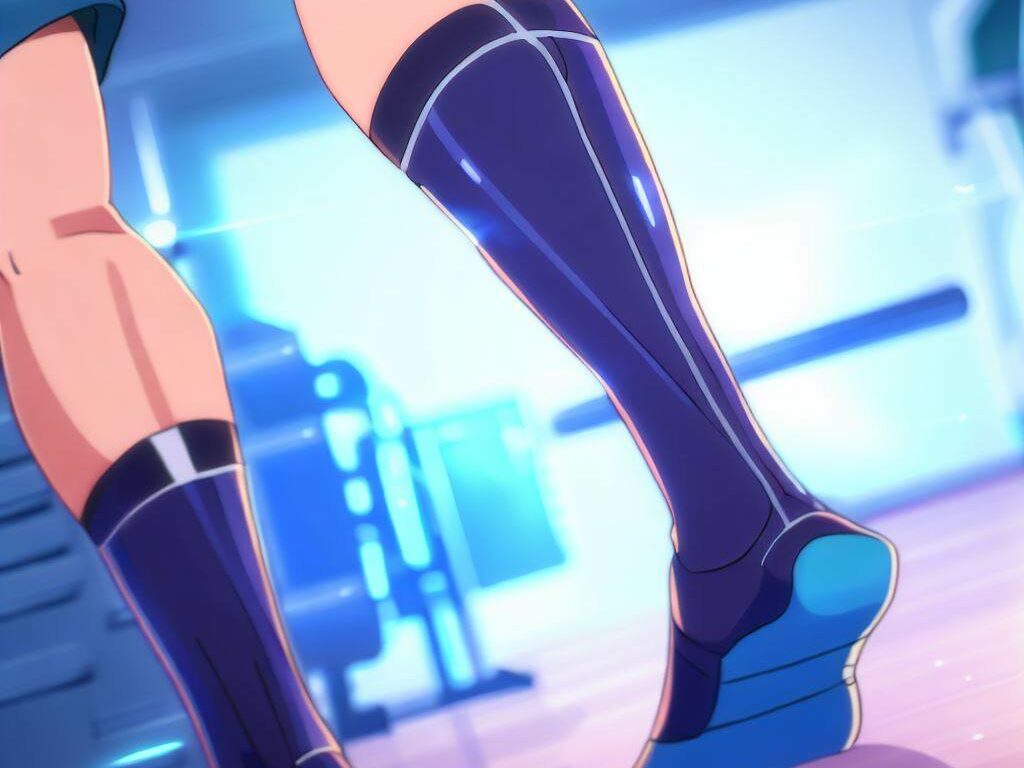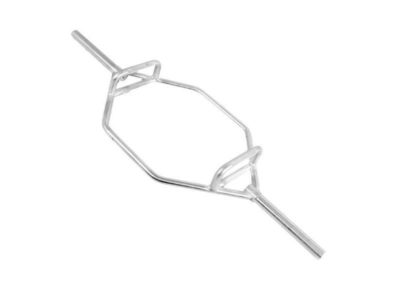Compression Socks for Working Out
Stay Active and Support Your Performance with Compression Socks

Are you looking for ways to enhance your workout routine and boost your performance? Consider adding compression socks to your fitness arsenal. Compression socks are specially designed to provide graduated pressure to your lower legs, offering numerous benefits for both athletes and fitness enthusiasts. We will explore what compression socks are, how they work, and the advantages they offer during exercise. We will also list the best compression socks for working out at the gym and for post-workout recovery.
What are Compression Socks?
Compression socks are tight-fitting garments that cover your feet, ankles, and lower legs. They are made of elastic materials such as nylon or spandex, and their primary function is to apply gentle pressure to your legs. The pressure is highest at the ankle and gradually decreases as the sock extends upward. This unique design promotes blood circulation and assists with venous return, which is the process of blood flowing back to the heart.
Think of the long socks that soccer players wear. Compression socks are about the same size, but are tighter fitting than regular socks.
The Best Compression Socks For Working Out And Recovery
Here are the top best compression socks for working out. These are all brands we love and each has their own strengths.
Sockwell Men’s Elevation Firm Graduated Compression Sock

These are our favorite overall compression socks. They are great for the gym, for post workout, for nurses who have to stand on their feet all day, for flights. Pretty much anything you might want to do you can do in these high quality merino wool based socks. If you need a general use compression sock, this is it.
Go2Socks Compression Socks

These are a step down in terms of quality from the Sockwell socks, but are also darn good socks. They are a little thinner than the Sockwell socks, but not everyone is going to be throwing down $30 on a pair of socks. Constructed from nylon, these socks provide a firm compression level ranging from 20 to 30 mm Hg, surpassing many cheap alternatives in performance. The sock shaft fits perfectly without excessive height, ensuring a comfortable wear.
These are the most affordable socks on our list of great compression socks for working out.
It is worth noting, however, that the Go2Socks may not appeal to everyone due to their particular style, and some users have reported that they tend to bunch at the toes.
CEP Men’s Running Compression Ultralight Run Socks

If you want a compression sock that is designed for endurance and strength, consider a marathon compression sock. Marathon runners are on their feet for hours, so you know a compression sock designed for marathons is going to last a long time. This sock is specifically designed for fitness and working out. Sockwell and Go2Socks are more general-use compression socks.
These ultralight compression socks provide a perfect fit for athletes, reducing sweat and keeping your feet dry in warm climates. Offering graduated compression of 20-30mmHg, they enhance circulation, reduce swelling, and prevent muscle soreness. The advanced design includes breathability, sweat-wicking properties, and seamless toe-closure for improved comfort and shoe fit. If you can afford them, elevate your performance with CEP Ultralight Run Socks.
PRO Compression Marathon Socks

Ok, I think these are pretty ugly… But they are quality socks that are specifically designed for marathons and workouts.
Made from Nylon and Spandex, these socks are designed to provide graduated compression of mmHg 20-30. The moisture-wicking properties keep you dry during intense exercise, ensuring long-lasting wear. With an innovative design featuring a wide top cuff for maximum circulation and a comfortable, breathable poly-nylon fabric, these socks stay securely in place and provide all-workout comfort. They’re a more affordable version of a marathon sock than the CEP.
How Do Compression Socks Work?
During exercise, especially high-impact activities like running or jumping, your muscles experience increased stress and vibration. This can cause muscle fatigue, swelling, and micro-tears in the muscle fibers. Compression socks help mitigate these issues by exerting pressure on your legs, which compresses the veins and increases blood flow velocity. This enhanced circulation improves oxygen delivery to the muscles and aids in the removal of metabolic waste products like lactic acid.
Furthermore, compression socks provide stability to the muscles, reducing muscle oscillation and vibration. This can enhance your proprioception (awareness of your body’s position in space) and contribute to improved balance and coordination. By stabilizing the muscles and reducing fatigue, compression socks can potentially help prevent injuries and enhance overall performance.
Benefits of Compression Socks for Working Out
A 2020 meta study looking at compression socks (CS) while working out “conclude that wearing CS during exercise improved performance in a small number of studies. However, wearing CS could benefit muscle function indicators and perceived muscle soreness during the recovery period.” So you may get benefits from compression socks during and after a workout.
Possible benefits of using compression socks for working out include:
- Enhanced Performance: The improved blood flow and reduced muscle vibration offered by compression socks can help you perform better during your workouts. With increased oxygen delivery to your muscles, you may experience improved endurance, reduced muscle soreness, and enhanced muscle recovery.
- Quicker Recovery: After an intense workout, your muscles need time to recover and repair. Compression socks aid in the removal of metabolic waste products, such as lactic acid, which can expedite the recovery process. Wearing compression socks post-workout can help reduce muscle soreness and decrease the duration of muscle fatigue.
- Injury Prevention: Compression socks provide support to your muscles, tendons, and ligaments, reducing the risk of sprains, strains, and other exercise-related injuries. The compression can help stabilize your joints and improve your proprioception, minimizing the chances of missteps or incorrect movements.
- Reduced Swelling: Prolonged standing or intense workouts can lead to swelling in the legs and ankles. Compression socks assist in preventing or reducing edema (swelling) by aiding the lymphatic system in fluid removal and promoting better circulation.
- Improved Comfort: Compression socks are designed to fit snugly around your legs and feet. They can provide additional cushioning, arch support, and moisture-wicking properties, ensuring a more comfortable exercise experience.
Wearing Compression Socks Post-Workout
Don’t limit the use of compression socks to just your workout sessions. These versatile garments can be incredibly beneficial when worn after your exercise routine as well. Here’s why wearing compression socks post-workout is a smart choice:
After an intense workout, your muscles need time to recover and repair. Wearing compression socks during this recovery period can expedite the process. The graduated pressure provided by the socks helps flush out metabolic waste products, such as lactic acid, from your muscles. This can reduce muscle soreness and fatigue, allowing you to bounce back faster for your next training session. Additionally, compression socks promote better circulation, ensuring that oxygen and nutrients reach the muscles more efficiently, aiding in the repair process and minimizing the risk of delayed onset muscle soreness (DOMS).
Compression socks also help alleviate swelling in the legs and ankles that can occur after intense physical activity or prolonged standing. By promoting better circulation and lymphatic fluid drainage, compression socks can reduce edema (swelling) and help your legs return to their normal size more quickly. This can contribute to a more comfortable post-workout experience and allow for improved recovery.
To maximize the benefits of wearing compression socks post-workout, put them on as soon as possible after your exercise routine while your legs are still warm. Or keep them on if you used compression socks during your workout. Aim to wear them for at least 1-2 hours, although longer durations can provide additional benefits. Additionally, consider elevating your legs while wearing compression socks to further aid in lymphatic drainage and reduce swelling. By incorporating compression socks into your post-workout routine, you can optimize your recovery, reduce swelling, and promote overall muscle rejuvenation. Give your legs the support they deserve and enjoy the rewards of this simple yet effective recovery tool.
Choosing Compression Socks
When selecting compression socks for working out, consider the following factors:
- Compression Level: Compression socks come in various compression levels, usually measured in millimeters of mercury (mmHg). The ideal compression level depends on your needs and preferences. Mild to moderate compression (15-20 mmHg) is generally suitable for most athletes, while higher compression levels may be recommended for specific conditions or intense activities.
- Material and Breathability: Look for compression socks made from breathable, moisture-wicking fabrics to keep your feet dry and comfortable during workouts. Materials like nylon, spandex
- and polyester blends are commonly used in compression socks and provide a balance of comfort and durability.
- Fit and Size: It’s crucial to choose the right size and fit for maximum effectiveness. Measure your calf circumference and consult the sizing chart provided by the manufacturer to find the appropriate size. A proper fit ensures that the compression socks stay in place and exert the right amount of pressure on your legs.
- Design and Style: Compression socks come in a wide range of designs and colors, so you can choose a style that matches your personal preference. Whether you prefer solid colors or vibrant patterns, there’s a compression sock design for everyone.
Tips for Using Compression Socks
Here are some tips to make the most of your compression socks during workouts:
- Put Them On Properly: To ensure optimal effectiveness, make sure to put on your compression socks correctly. Start by turning the sock inside out, then place your foot inside and gradually roll the sock up your leg. Smooth out any wrinkles to ensure a snug fit without excessive tightness.
- Wear Them During Exercise: Wear your compression socks during your workout or physical activity to experience their full benefits. They can be worn for various activities, including running, weightlifting, cycling, or even team sports.
- Wear Them Post-Workout: Wearing your compression socks after a workout can help with recovery and improve blood flow.
- Gradually Adapt: If you’re new to compression socks, allow your body to adapt gradually. Start by wearing them for shorter durations during low-intensity workouts and gradually increase the duration and intensity over time.
- Consult a Professional: If you have specific medical conditions or concerns, it’s advisable to consult a healthcare professional or a sports medicine specialist. They can provide personalized guidance on the appropriate compression level and usage of compression socks based on your needs.
Conclusion
Did you know there are other types of compression clothing that you can use for working out? They have the great benefits of compression socks for other parts of your body.
Compression socks can be a valuable addition to your workout and post-workout gear, offering multiple benefits that can enhance your performance and aid in recovery. With their ability to improve blood circulation, reduce muscle vibration, and provide support to your legs, compression socks can help you stay active, prevent injuries, and achieve your fitness goals. So, why not give them a try? Invest in a pair of compression socks for working out and experience the positive impact they can have on your workout routine. Stay fit, stay active, and enjoy the benefits of compression socks!



